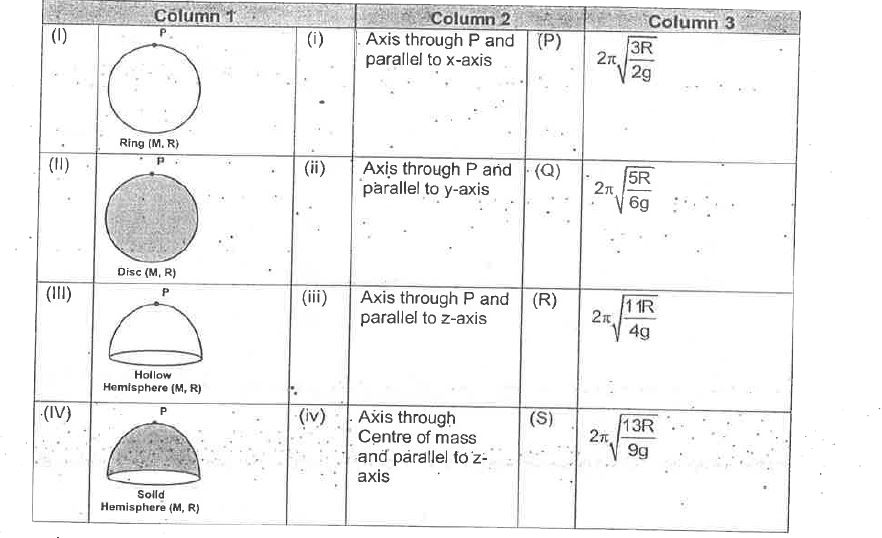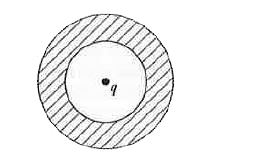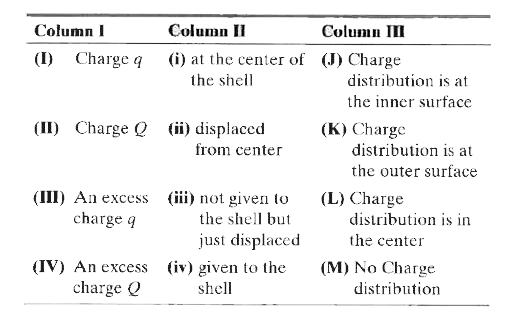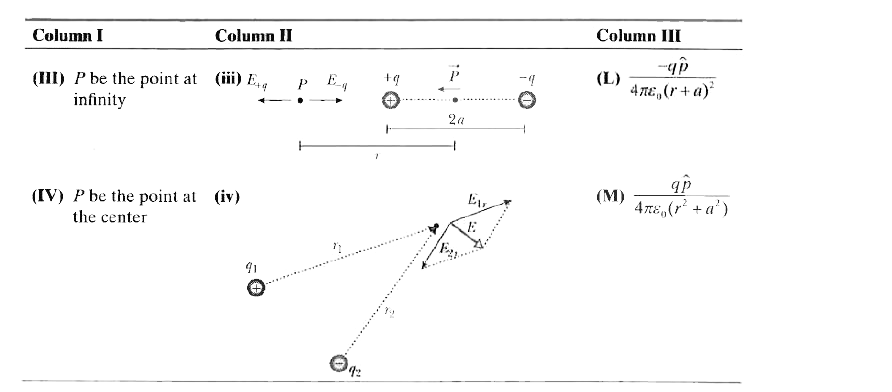The following situation regards the physical pendulum. Column-1 gives the different types of bodies. Column -2 gives the different axes about which they can possibly perform SHM. Column-3 gives possible time periods. (The plane of the four figure is the vertical plane)


Pick the option for minimum value of VA
(I) (ii) (P)
(II) (i) (R )
(III (iv) (Q)
(II) (iii) (S)
The correct Answer is:C
Topper's Solved these Questions
- BOOK - FIITJEECHAPTER - SIMPLE HARMONIC MOTIONEXERCISE - Exercise28videos
SIMPLE HARMONIC MOTION
- BOOK - FIITJEECHAPTER - SIMPLE HARMONIC MOTIONEXERCISE - Assignment Problems (Subjective) (Level)20videos
SIMPLE HARMONIC MOTION
- BOOK - FIITJEECHAPTER - SIMPLE HARMONIC MOTIONEXERCISE - Numerical Based Questions6videos
SIMPLE HARMONIC MOTION
- BOOK - FIITJEECHAPTER - SEMICONDUCTOR AND DEVICEEXERCISE - SOLVED PROBLEMS Objective: Level-I20videos
SEMICONDUCTOR AND DEVICE
- BOOK - FIITJEECHAPTER - TEST PAPERSEXERCISE - PHYSICS747videos
TEST PAPERS
Similar Questions
Column -I shows different situations in which an object O is shown in front of the optical element. Column-II gives the corresponding velocity vector of the image of the object.
_E01_101_Q01.png)
Object is moving with velocity v and diverging mirror is moving with velocity 2vView SolutionColumn I gives certain situations in which capacitance of a capacitor is charge by different means. Column II gives resulting effect under different conditions. Match the proper entries from colum - 2to column -1 using the codes given below the columns,
Column I Column II(P)The plates of a plane parallel capacitor are slowly pulled apart. Then the magnitude of electric field intensity inside the capacitor.(1)Increases if the capacitor is maintained at constant5 charge.(Q)The paltes of a plane parallel plate capacitor are slowly pulled apart. Then the potential energy stored in the capacitor.(2)Decreases if the capacitor is maintained at constant charge(R)The capacitance of an air filled plane parallel plate capacitor on insertion of dielectric(3)Increases if the capacitor is maintained at constant potential difference.(S)A dielectric on inserted an air filled plane parallel plate capacitor. The potential energy stored in the capacitor.(4)Decreases if the capacitor is maintained at constant potential difference.View Solution
Knowledge Check
- Question 1 - Select One
The following situation regards the physical pendulum. Column-1 gives the different types of bodies. Column -2 gives the different axes about which they can possibly perform SHM. Column-3 gives possible time periods. (The plane of the four figure is the vertical plane)


Pick correct optionA(I) (ii) (S)B(II) (ii) (P)C(I) (ii) (R )D(IV) (i) (Q) - Question 2 - Select One
Column-I gives different situtions in which bodes are floating in liquid. Column-II gives correspoding time periods of oscillation.
_E01_069_Q01.png)
A cube floating in liquid.APQRS(A)3421BPQRS(B)1342CPQRS(C)2314DPQRS(D)4321 - Question 3 - Select One
Column -I shows different situations in which an object O is shown in front of the optical element. Column-II gives the corresponding velocity vector of the image of the object.
_E01_101_Q01.png)
Object is moving with velocity v and diverging mirror is moving with velocity 2vAP Q R S1 2 3 4BP Q R S4 3 2 1CP Q R S4 1 3 2DP Q R S3 1 4 2
The coefficent of friction between the masses 2m and m is 0.5. All other surfaces are frictionless and pulleys are massless. Column I given the different values of m1 and column II gives the possible acceleration of 2m and m. Match the following :

Column IColumn II(A)m1=2m(P)Accelerations of 2m and m are same(B)m1=3m(Q)Acceleration of 2m and m are different(C)m1=4m(R)Acceleration of 2m is greater than m(D)m1=6m(S)Acceleration of 2m is less than 0.6 g(T)Acceleration of 2m is greater than 0.6 gView SolutionConsider the figure given below

A charge Q is placed inside the Spherical conductor shell. In the given table, column 1 shows different charges, column 2 shows the positions of the electric charge and column 3 shows the different types of charge distribution.

In which case will the charge distribution be non-uniform ?View SolutionConsider the figure given below

A charge Q is placed inside the Spherical conductor shell. In the given table, column 1 shows different charges, column 2 shows the positions of the electric charge and column 3 shows the different types of charge distribution.

In which case will the Charge distribution be uniform ?View SolutionColumn I gives ertain situtaions situations in which capacitance of a capacitor is charge by different means. Column II gives resulting effect under different conditions. Match the proper entries from colum - 2to column -1 using the codes given below the columns,
Column I Column II(P)The plates of a plane parallel capacitor are slowly pulled apart. Then the magnitude of electric field intensity inside the capacitor.(1)Increases if the capacitor is maintained at constant5 charge.(Q)The paltes of a plane parallel plate capacitor are slowly pulled apart. Then the potential energy stored in the capacitor.(2)Decreases if the capacitor is maintained at constant charge(R)The capacitance of an air filled plane parallel plate capacitor on insertion of dielectric(3)Increases if the capacitor is maintained at constant potential difference.(S)A dielectric on inserted an air filled plane parallel plate capacitor. The potential energy stored in the capacitor.(4)Decreases if the capacitor is maintained at constant potential difference.View SolutionAn electric dipole is the combination of two equal and opposite charges q and -q, respectively, separated by distance 2a. There are different points where we can find electric field due to the electric dipole. In the given table, column 1 shows different positions of point where we have to find electric field due to dipole, column 2 shows the figure of dipole with different positions of point where we have to find the electric field and column 3 shows the value or final formula of the electric field of different positions of the point.
when point P lies on the equatorial plane of the electric dipole, electric field due to +q is ?

 View Solution
View Solution

